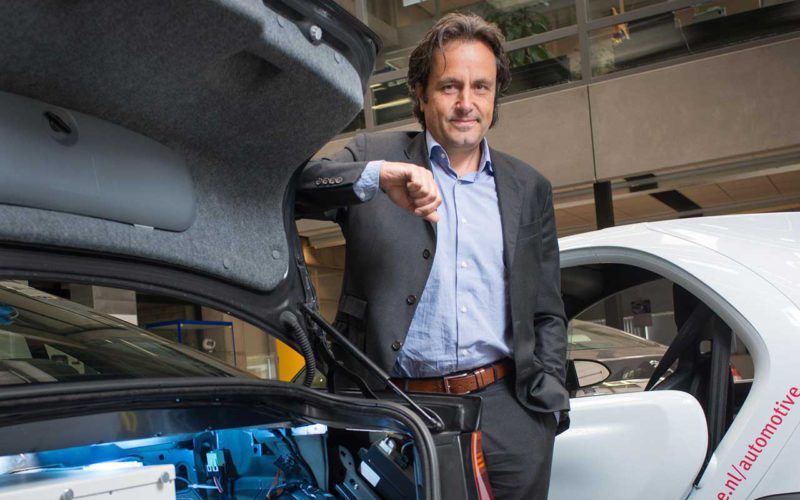
Anyone who thinks that the self-driving car is the future is wrong. At least when it comes to the chaotic mess in city centers like Amsterdam. These are so cluttered and unpredictable that it would be impossible for autonomous vehicles to anticipate traffic conditions. Which is what Carlo van de Weijer has predicted at the opening of the AI in Engineering symposium. He is director of the new Eindhoven Artificial Intelligence Systems Institute (EAISI, pronounced ‘easy’ in English) at TU Eindhoven in the Netherlands.

Experiment in the US
Van de Weijer worked in the automobile industry for a long time and wanted to answer the question as to why we are still not driving through the country in self-driving cars. The reason is that it is very difficult to make automated vehicles function like a human being. Van de Weijer gave an example of an experiment in the US where a robotic car kept driving on the right lane while a very slow truck was driving on it’s left. A tailgater behind the autonomous car wanted to pass but wasn’t able to.
Read other Innovation Origins columns by Carlo van de Weijer here.
If the autonomous car had been driven by a human being, it might have driven faster and the tailgater could have crossed to the left lane in front of the truck. (This is allowed in the US.) But because the autonomous car kept to the maximum speed for the right lane that it was driving on, it didn’t do that. Only when the truck sped up and overtook the autonomous car (which meant that the autonomous car had to slow down slightly) was the other car able to cross over to the other lane.
Crash on the highway
Another instance of a failed maneuver was when an autonomous car crashed on the highway. The driver was killed. According to the investigation, this was because the white line on the road surface was worn out which meant that the autopilot sensors did not see it. These situations could be avoided if road surfaces are maintained in such a way that all self-driving vehicles would be able to drive safely on them. Worn out traffic lane lines aren’t usually a problem for people. Because people are able to figure out where the lines should be, as the lines continue on from where they came from.

‘Cyclists win in Amsterdam’
There will never be a solution for autonomous cars in certain traffic situations, Van de Weijer states. He showed a video of the Amsterdam city center. Photographer Thomas Schlijper filmed an intersection near the Korte Prinsengracht for some time. It revealed how random cyclists and pedestrians criss-crossed each other. There were even two cyclists who collided.
Motorists were waiting to squeeze their way through the tangle of cyclists and pedestrians from the left and right sides of the street. If you want self-driving cars to start driving here, you will need to take everything into account in the car’s AI system, Van de Weijer said. And even then it’s not going to work well enough. Dogs, cats, everything has to be in there. That can’t be done.”
In those kinds of places, a car is really not the best means of transport, according to Van de Weijer. That doesn’t have to be a problem; there’s always the tram, the underground, the bicycle. And walking is also an option.
Autonomous car on request
If we have self-driving cars in the future for longer distances solely on specially designated roads, then in some places the car will eventually disappear from the streets altogether. The idea is that you would then order a car that picks you up somewhere and takes you somewhere else. It is no longer private property, but a shared service.
What is artificial intelligence? What can you do with it and how will it influence our daily lives? In this IO-video, Buster Franken and Vincent Müller answer the most important questions:


